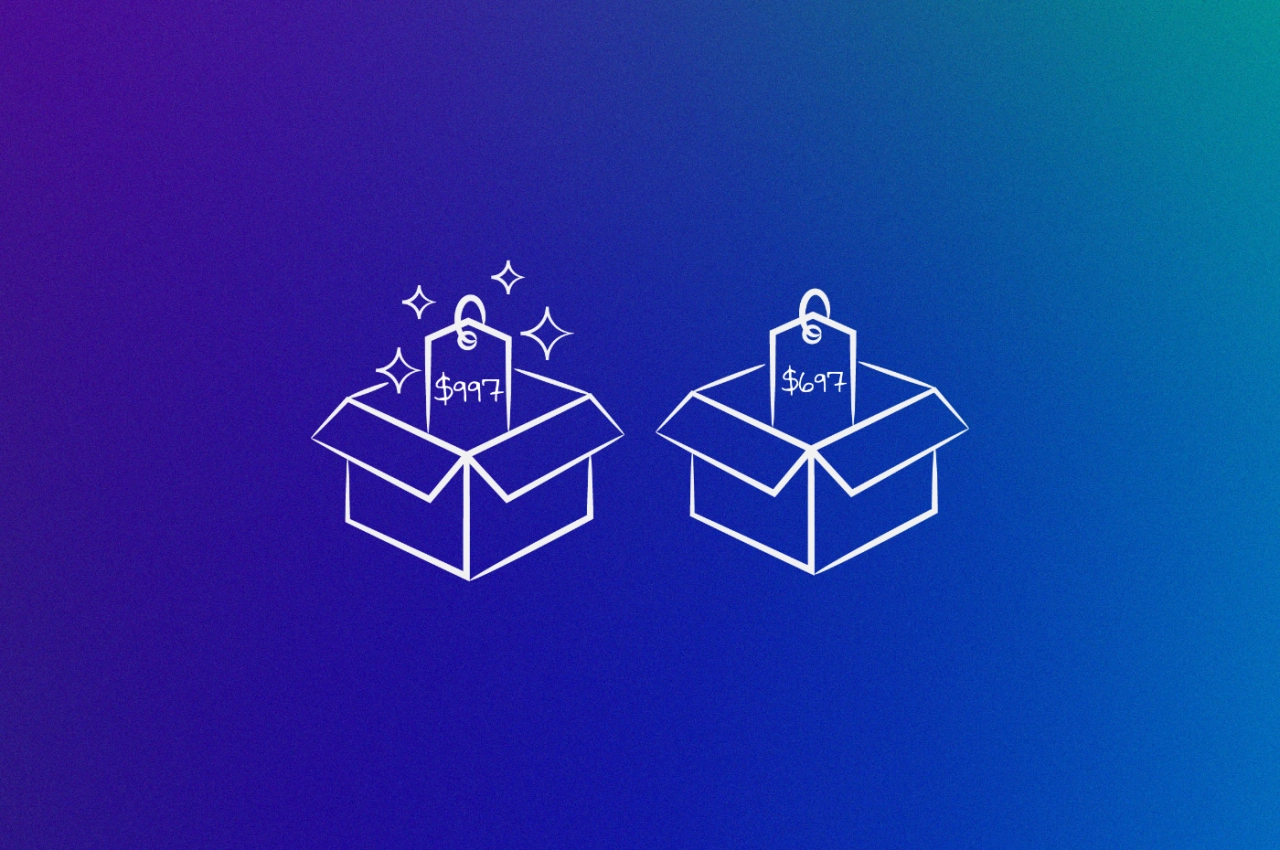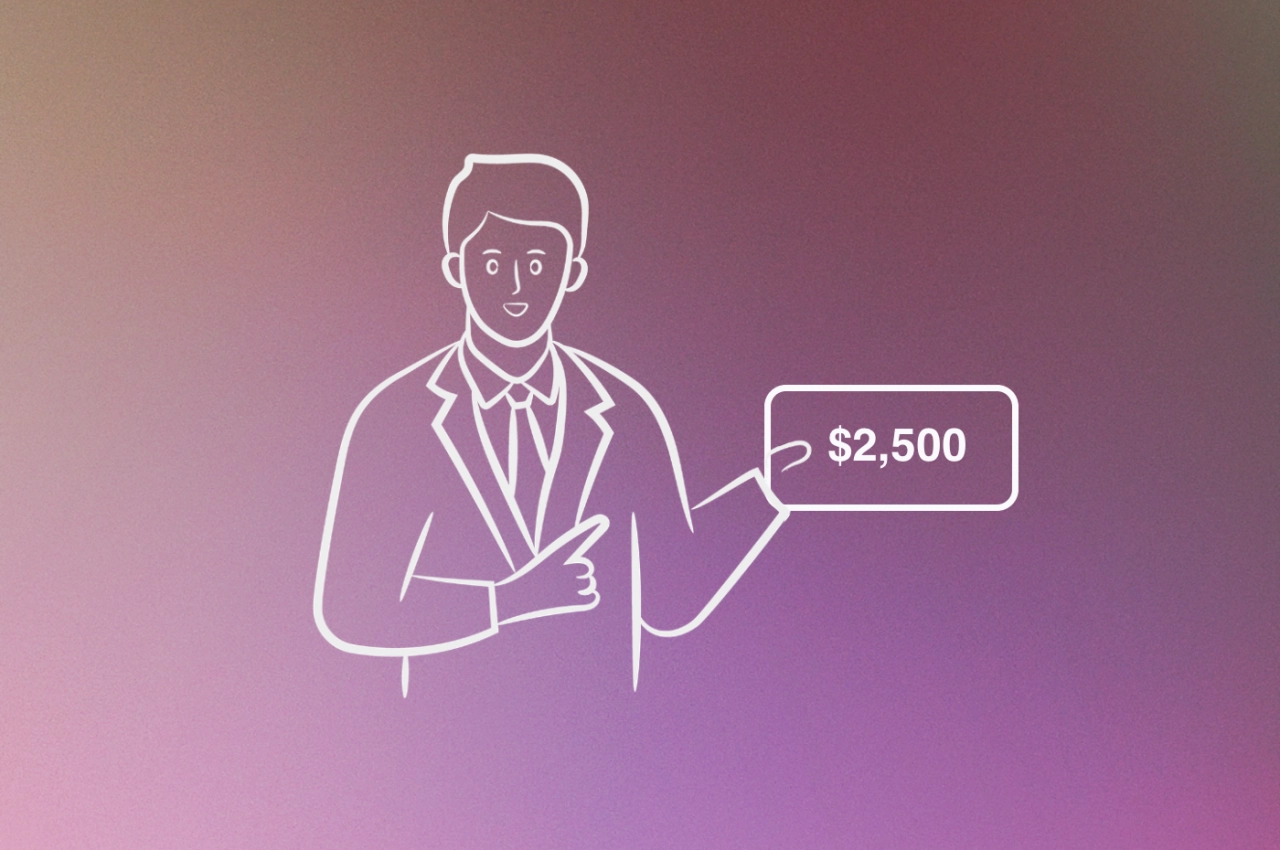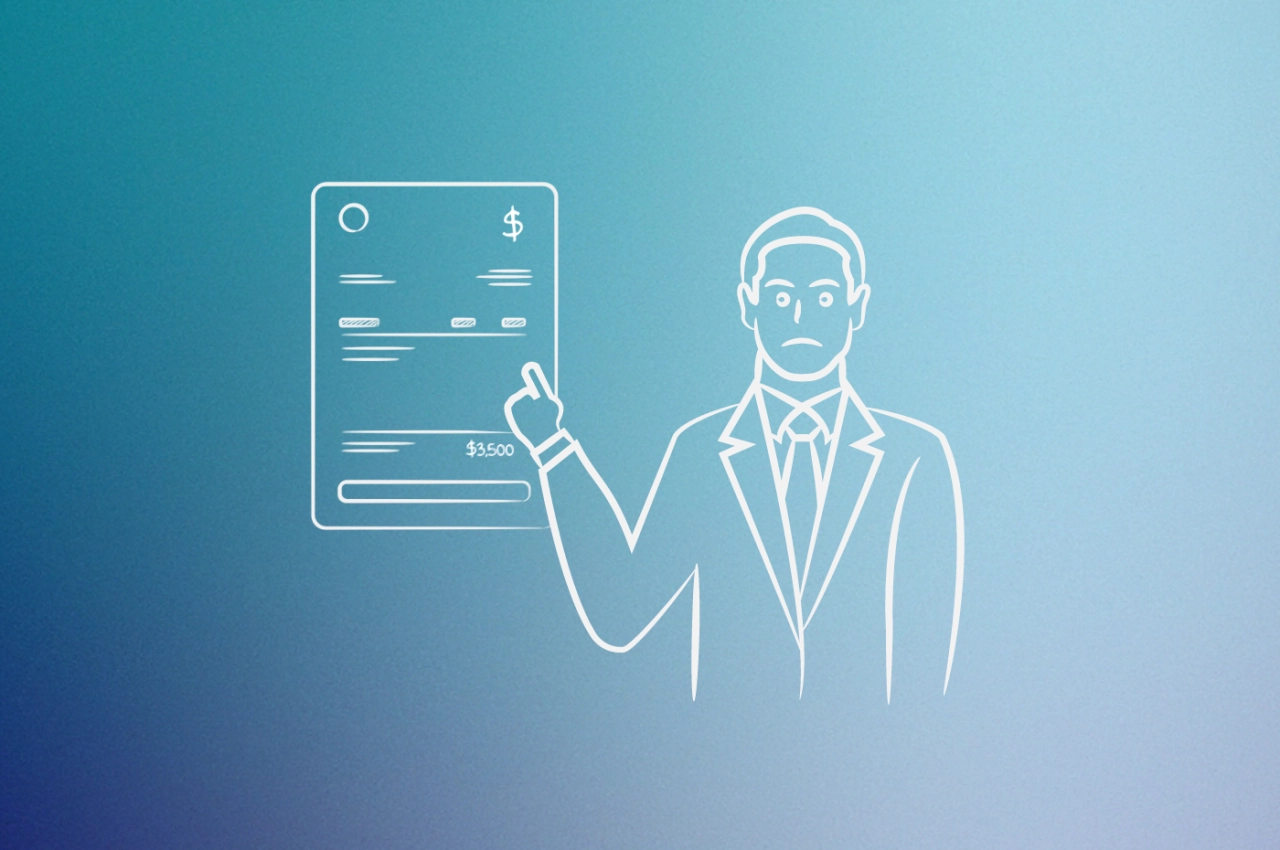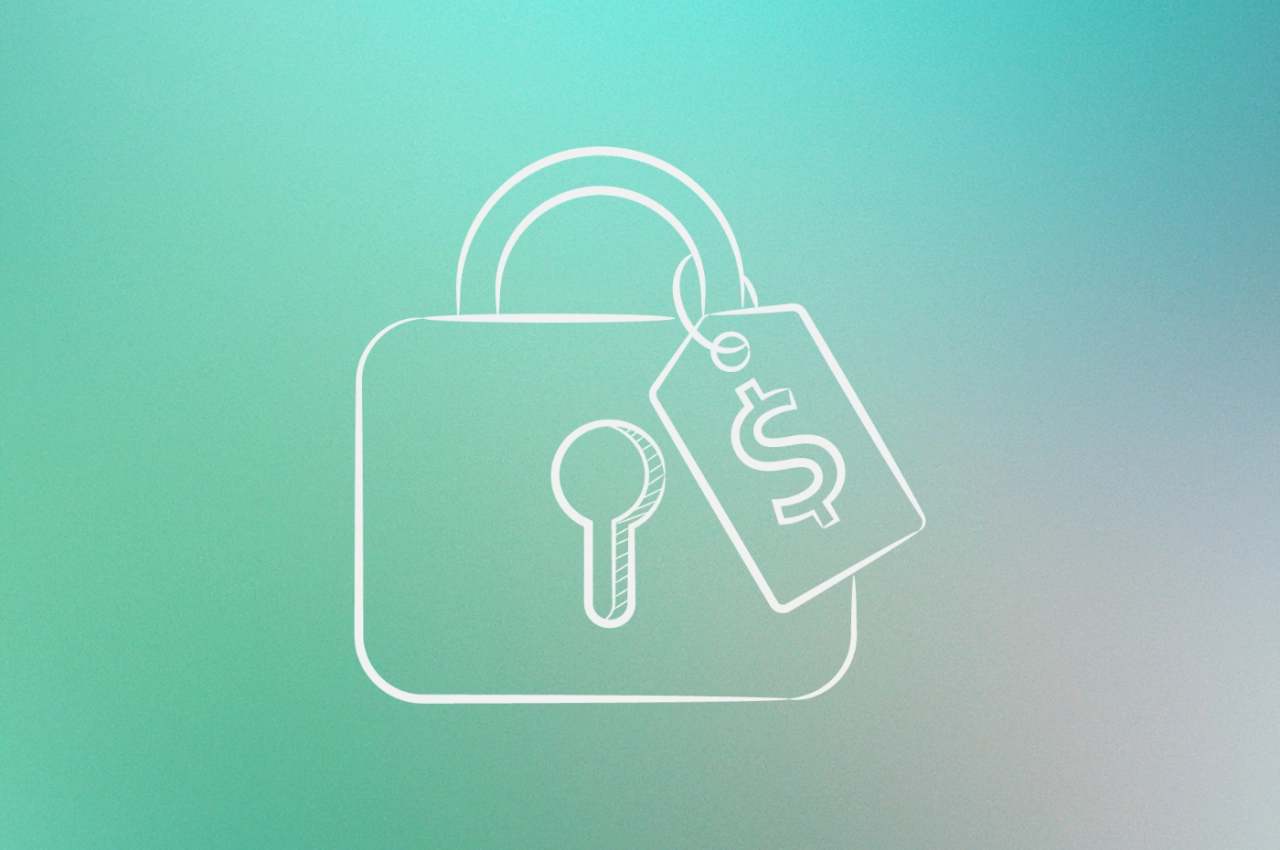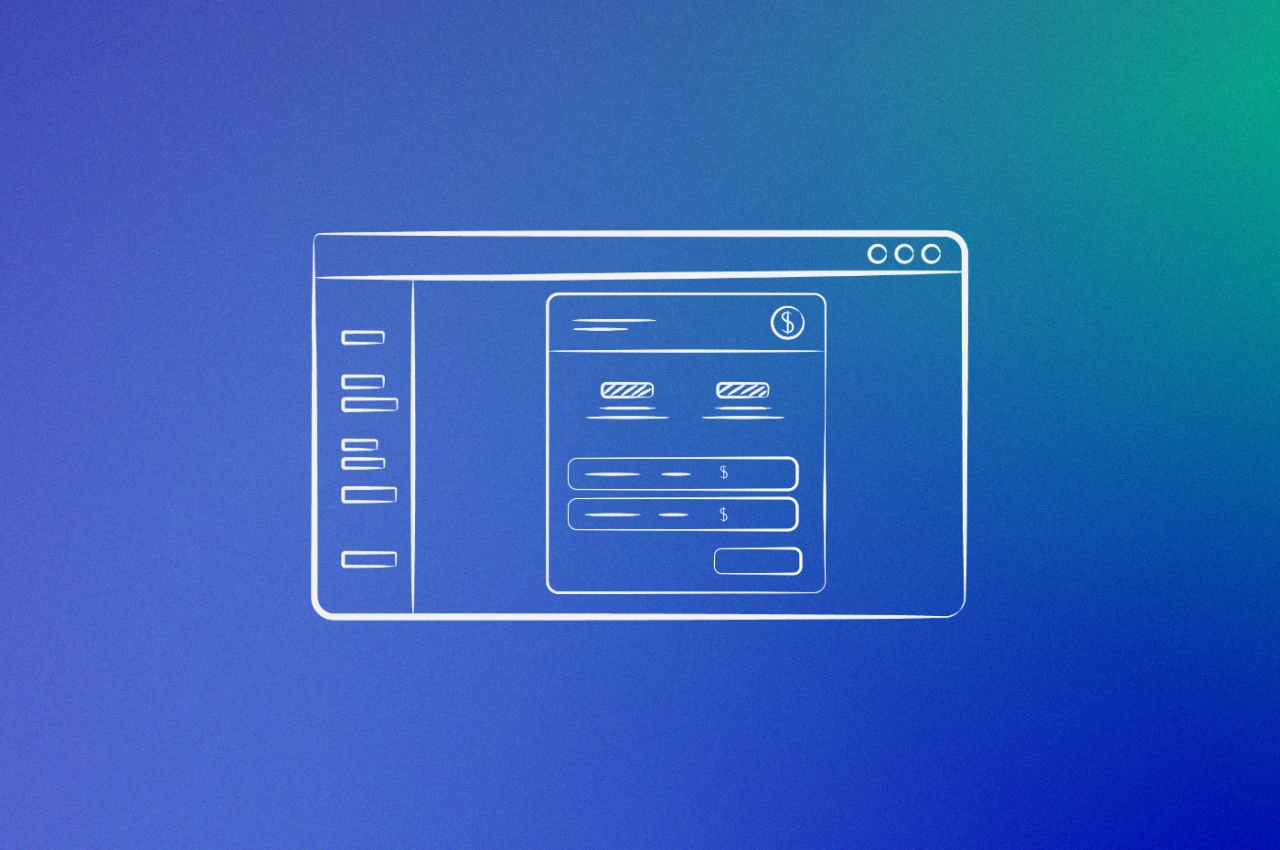- Premium pricing strategy involves charging higher prices to demonstrate superior quality and create a sense of exclusivity and value.
- Benefits of premium pricing include higher profit margins, enhanced brand image, competing on quality rather than price.
- Premium pricing works best for brands with a reputation for high-quality products or services, unique selling propositions, target markets that value luxury.
Ever wonder why certain brands can charge ten times more than their competitors and still have customers lining up? Premium pricing is a powerful type of pricing strategy that transforms ordinary products into coveted status symbols.
This approach isn't limited to luxury brands—it creates perceptions of exclusivity, superior quality, and value that customers eagerly pay premium prices to obtain. For marketing agencies, mastering premium pricing helps position your services and your clients' products to increase profit margins, enhance brand perception, and create meaningful differentiation in crowded markets.
Understanding this topic involves several interconnected concepts:
Each of these concepts plays a crucial role in the overall topic.
What is a premium pricing strategy?
For agencies, a premium pricing strategy means positioning your services at a higher price point than competitors in your niche. Rather than competing on affordability, you’re signaling to clients that your agency delivers superior results, expertise, and client experience. This approach is particularly effective for agencies focused on high-value deliverables like strategy, specialized technical implementation, or measurable business outcomes rather than commodity services.
Also known as prestige pricing, it’s often used by luxury brands, niche markets, or businesses with specialized products, especially in the fashion, tech, and automobile industries.
Think about the last time you purchased a product: you probably had different price options but you chose the one that costs more. Why? Because as humans, we associate higher prices with superior quality.
This is what premium pricing achieves. Charging high prices helps to differentiate your brand from other lower-priced alternatives, and also raises the perceived value of your product.
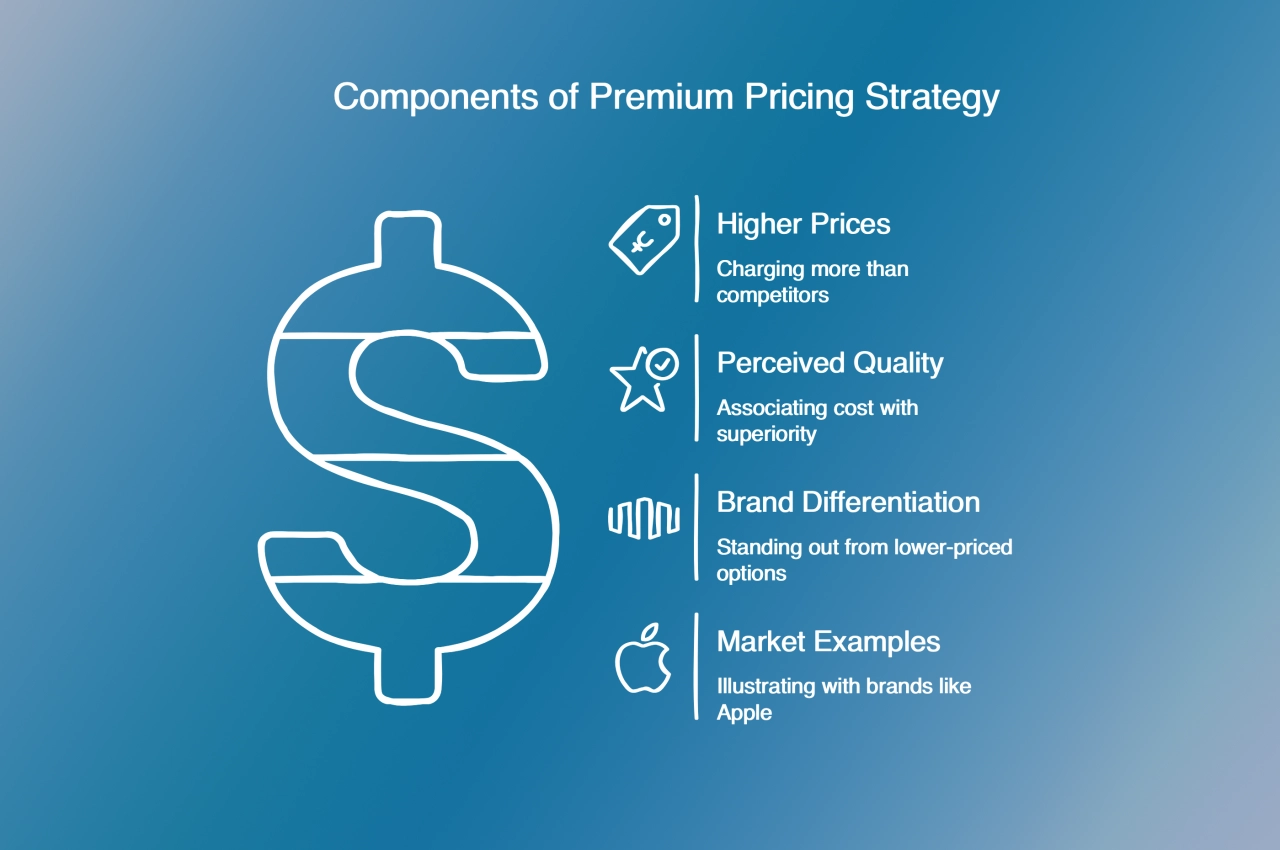
An example of a brand that uses premium pricing to great effect is Apple. They charge top dollar for their products like the iPhone, iPad, and MacBook. Despite the expensive price, their loyal customers keep buying because Apple has proven that their products are of superior quality. Apple has even gone so far as to design components such as the processor in-house to further set themselves apart, and become an industry leader.
Challenges of premium pricing
While premium pricing strategies can significantly boost your agency’s profitability and positioning, they come with distinct challenges that require careful navigation. Understanding these potential pitfalls helps you implement premium pricing in a way that enhances rather than damages your business.
Adapting to market volatility
Premium pricing isn’t set-it-and-forget-it—it requires continuous adaptation to market conditions:
Economic downturns often force clients to scrutinize premium services first. During these periods, you may need to adjust your value proposition to emphasize ROI rather than premium features.
Shifting industry standards can suddenly transform your premium offering into a standard expectation. What justified a premium price last year (like basic data analytics) might be considered table stakes today.
Client budget cycles create uneven demand patterns. Premium services often face heightened scrutiny during Q4 budget planning, requiring you to strengthen your value narrative during these critical periods.
The agencies that successfully maintain premium positioning don’t stubbornly hold to rigid pricing structures. Instead, they regularly reassess market conditions and adapt their premium offerings—whether by adding new high-value components or adjusting their messaging to address current client priorities.
The expectation gap risk
Premium pricing creates elevated expectations that must be consistently met—or exceeded:
Service delivery misalignment occurs when your team doesn’t fully understand the premium promise being made to clients. This disconnect leads to disappointed clients who expected white-glove treatment but received standard service.
Consistency challenges emerge as you scale. A premium experience delivered by your founding team might be difficult to maintain as you bring on new team members who don’t inherently understand your premium standards.
Scope boundary confusion happens when premium clients expect exceptional service even for work outside your defined deliverables. Without clear boundaries, premium pricing can lead to constant scope creep.
The risk here isn’t just losing a single client—it’s damaging your brand credibility in ways that can take years to repair. Agencies charging premium rates must invest heavily in internal processes, team training, and quality control systems to ensure they consistently deliver on their premium promise.
Competitive undercutting
Perhaps the most persistent challenge comes from competitors offering seemingly similar services at lower price points:
Feature-matching competitors reverse-engineer your premium offerings and provide similar features at lower prices, forcing you to continually justify your premium positioning.
Offshore alternatives leverage lower operational costs to deliver comparable results at significantly reduced rates, particularly challenging for execution-focused services.
Technology-enabled disruptors use automation to deliver portions of your premium service more efficiently, targeting price-sensitive segments of your market.
This competitive pressure requires constant vigilance and evolution. Premium-positioned agencies must continuously enhance their offerings, deepen their expertise, and clearly articulate their unique value proposition in ways that make direct price comparisons irrelevant.
Why use a premium pricing strategy?
1. Higher profit margins
Using a premium pricing strategy can result in higher profit margins for your brand. Charging more for your services helps to generate more revenue per sale and increase your overall profit. For instance, creating a website for $10,000 is more profitable than building one for $2,000.
2. Enhances brand image
It’s no secret that some consumers are willing to pay more for products or services they consider exclusive, high-end, and of superior quality. As such, setting premium prices enhances your brand image and positions your products as luxury items.

For example, some people spend more to own a premium car brand like Mercedes-Benz over a Hyundai even though they perform the same function. This is as a result of the luxury brand image Mercedes has built overtime.
3. Compete on quality, not price
Unlike the competitive pricing strategy, premium pricing allows you to compete on quality and value rather than price. Charging more means you invest in better materials, equipment, processes, marketing, and customer service to ensure the standard of your product is of high quality.
This helps to differentiate your brand from lower-priced competitors, create a strong barrier to entry, and attract potential clients ready to pay more for quality.
4. Lower sales volume
While it may seem counterintuitive, a lower sales volume is one of the advantages of premium pricing. By selling fewer products at a higher price point, you can create a sense of scarcity and increase its perceived value. Those working off a project-based pricing strategy do need to adjust to this idea, but they’ll soon realize its many advantages.
Luxury watch brands such as Patek Philippe, and Audemars Piguet employ this marketing tactic. They only produce limited units of their watches each year, thereby making them scarce, exclusive, and more desirable to own. For a service business, you can limit the amount of recurring subscription services you sell.
5. Attract high-value clients
Some consumers like to be associated with luxury brands. A premium pricing strategy helps to attract these types of customers who want to differentiate themselves from the masses by owning expensive products.
By establishing premium pricing, you can tap into the emotions of your customers and create a sense of belonging.
When to use a premium pricing strategy?
Premium pricing works best for brands that have established a reputation for providing high-quality products or services. If your brand is associated with low prices or quality, it may be difficult to convince customers to pay more for your product.
That being said, here are some conditions that allow you to implement a prestige pricing strategy for your business.
1. First movers
If you’re the first to introduce a new product in a market, you can set a higher price tag to gain an advantage over competitors who may later imitate your product.
But unlike price skimming, you don’t have to gradually reduce the price over time. Instead, set your price as the benchmark for customers willing to pay for quality.
However, it’s important to maintain the same high quality and standard that your customers associate with you. This will help to retain them in the face of fierce competition.
2. Unique selling proposition
Having a unique selling proposition helps your brand stand out from your competitors. So, if your product contains a special feature that’s unavailable anywhere else, you can use it to justify the premium price.
For example, if you offer unique white label services others are not offering, it makes sense to charge more money for it. Customers who understand the value will happily pay for it.
3. Limited production
Do you have a product that’s limited or not readily available to the public but only to a select group of people? Place a premium price on it.
Making it exclusive creates a perception in the minds of consumers that it must be worth more than other similar products.
4. Target market
No matter how great your product is, some high-income earners would never associate themselves with it if it has low-price.
As such, if you’re targeting the luxury market, setting premium prices for your products or services is a no-brainer. Only then will your ideal potential clients listen to what you have to offer.
5. Patented product
Patenting your product will prevent competitors from creating, using, or selling it without your permission for a limited time. As such, you can set a premium price on your products since there are no close substitutes in the market.
6. Loyal customer base
Got a strong, loyal customer base? Have you built a solid reputation as a company that offers high-quality products? Then you can establish premium pricing. Doing this will help you stand out from other brands that offer similar services to yours.
However, it’s important to note not all customers may afford the new price. So rather than lose them to competitors, you can create a low-price product to cater to the mass market.
How to implement a premium pricing in your agency
1. Know your target audience
Before implementing premium pricing, it’s important to know who your target audience is and what influences their buying decision.
Ask yourself:
Do they value quality over price?
Would they be willing to pay more if you raise your prices?
How valuable is your product to them?
What do they find unique about your product that will justify a more expensive price?
Ensure you get answers to these crucial questions before you decide to increase your prices. Otherwise, you may lose your customers to lower-priced competitors.
You can survey or interview your existing clients to get their feedback. It will help you to determine if premium pricing is the right strategy for your business.
2. Identify your unique value proposition
People won’t pay a premium price for your product if there’s no major difference between yours and what’s out there. As such, the only way to justify the high price you charge is to identify your unique value proposition (UVP).

In other words, pinpoint what distinguishes your product from your competition. This can be in the form of a unique feature, superior materials, innovative design, environmental friendly packaging, or excellent customer service.
For example, Apple’s state-of-the-art design (both internal and external) and exclusive ecosystem is the UVP that differentiates its products from brands. And they do a great job of showing this across all their digital platforms.
3. Communicate your UVP
Once you know your target audience and you’ve identified your UVP, the next step is to create messaging that clearly communicates your UVP on all your marketing materials, website, and social media pages.
The goal is to reinforce the idea that your brand is worth the premium price you’re charging. To accomplish this, tailor your messaging to resonate with the kind of people you’re targeting to match their budget, needs, and desires.
4. Create a sense of exclusivity
It’s no secret that some customers value more than just quality. They also want the exclusive access that comes with buying a product. You can leverage this to create a sense of exclusivity around your premium-priced products.

Find the right mix of service packages to maximize profit
You can add members-only access, limited editions, or exclusive offers as part of a deal. This way, you’ll not only justify the high price you’re charging but also make your customers feel special.
5. Say no to promotions
One common marketing tactic most businesses use to snatch customers from their competitors is to slash the prices of their products. But this strategy only works for price-sensitive customers.
When implementing premium pricing, don’t fall into the discount trap that diminishes your agency’s value. Instead of slashing prices (which signals desperation), create strategic value bundles that reinforce your premium positioning. Remember, your ideal clients aren’t bargain hunters—they’re seeking exceptional outcomes that justify investment.
What works better than discounts? Consider these value-add options:
exclusive strategy sessions that complement your core deliverables
enhanced reporting that demonstrates clear ROI
extended support periods that showcase your commitment to client success
This approach preserves your market position while still giving prospects compelling reasons to sign. With that said, the key is positioning these additions as exclusive benefits rather than desperate concessions. Your pricing communicates your confidence—and confident agencies don’t discount their expertise.
6. Excellent customer support
Charging your customers much higher than the market price means they are considered high-value clients. This means providing excellent customer support is non-negotiable.
Therefore, when implementing a premium pricing strategy, ensure your customer support team is knowledgeable, professional, and responsive. Failing to do so might lead to you losing one premium customer—and that can be a big hit for your financial situation.
Building your agency’s premium foundation
Rather than making an overnight price jump, premium positioning requires methodical groundwork. Let’s break down each foundational element with actionable steps specifically designed for service businesses.
1. Building a strong brand reputation
Your agency’s reputation directly impacts what clients will pay. Here’s how to systematically strengthen it:
Specialize in a specific industry vertical: Track which clients generate the highest profit margins and double down on that sector.
Create authoritative content assets: Develop at least 2–3 comprehensive resources that demonstrate your expertise.
Cultivate strategic partnerships: Form alliances with complementary service providers who already serve premium clients.
Document and showcase measurable results: Build case studies that emphasize ROI rather than deliverables.
2. Developing a loyal customer base
Before pursuing new premium clients, maximize value from your existing relationships:
Implement a client success program: Create proactive touchpoints beyond project deliverables (quarterly strategy sessions work well).
Build a referral generation system: Structure incentives for existing clients to introduce you to similar organizations.
Establish a client feedback loop: Use standardized surveys at project milestones to identify improvement opportunities.
Create an exclusive client community: Facilitate connections between clients to increase their attachment to your ecosystem.
3. Identifying your unique selling proposition
Generic service descriptions kill premium pricing. Here’s how to develop genuine differentiation:
Analyze your most successful projects: Identify patterns in what you do differently from competitors.
Develop a proprietary methodology: Name and document your unique approach to solving client problems.
Create a service delivery guarantee: Offer specific assurances competitors aren’t willing to match.
Package high-value intangibles: Formalize access to your team’s expertise beyond project deliverables.
Deep expertise. Ours is in a specific niche: SaaS. We’ve exclusively worked with SaaS companies, which is a key differentiator for our target market.
 Celia Hey,
Hey Design
Celia Hey,
Hey Design
Fret not if this process takes time—premium positioning isn’t built overnight. The agencies that rush to premium pricing without this foundation typically revert to discounting within months. Build these elements systematically, and higher prices become the logical conclusion rather than an aspirational goal.
Measuring premium pricing success
Implementing premium pricing is just the first step—knowing whether it's actually working requires strategic measurement. Let's explore the metrics that matter for service businesses adopting a premium approach.
The premium pricing scorecard
Most agency owners make the mistake of measuring premium pricing success through revenue alone. With the right metrics dashboard, you’ll gain deeper insights into how your pricing strategy is transforming your entire business.
Financial health indicators
These metrics reveal the immediate business impact of your premium pricing:
Client value metrics
average project value (aim for 30%+ increase)
client lifetime value (should increase by 40-60%)
revenue per team member (target: $25-50K increase annually)
Profitability measures
gross profit margin (should improve by 10-15%)
scope creep instances (should decrease by 30%+)
discount request frequency (should decrease significantly)
Remember, these numbers tell a story over time. Track them monthly and look for consistent trends rather than short-term fluctuations.
Client quality assessment
Premium pricing naturally filters your client roster—here’s how to measure the quality improvement:
Client behavior metrics
decision-making timeline (premium clients decide faster)
payment promptness (improved by 40% in most agencies)
referral quality and frequency (higher-value introductions)
Working relationship indicators
scope adherence percentage
revision request volume
after-hours contact frequency
I’ve seen agencies transform their operations simply by tracking these metrics, which often improve naturally with premium pricing as clients show greater respect for boundaries.
Operational efficiency measurements
Premium pricing should reduce the chaos in your agency—measure it with:
Project dynamics
number of active projects (often decreases)
project completion timelines
resource allocation efficiency
Team productivity
billable hours percentage
administrative time per client
team capacity utilization
With premium pricing properly implemented, you’ll typically see fewer but more profitable projects, leading to improved team focus and reduced context-switching costs.
Brand Positioning Evidence
How do you know your premium positioning is being recognized? Track these indicators:
Market perception
inbound lead quality score
competitive positioning mentions
industry recognition metrics
Authority indicators
speaking invitation frequency
partnership opportunity quality
content engagement depth
These measures help confirm whether your market actually perceives you as premium—which is the ultimate validation of your pricing strategy.
Implementation timeline expectations
When should you expect to see results? Here's a realistic timeline:
Timeframe | What to expect |
1–3 months | Initial resistance, some client attrition, team adjustment period |
3–6 months | Financial metrics begin improving, operational benefits emerge |
6–12 months | Brand positioning shifts, higher-quality leads increase |
12+ months | Full transformation visible across all metrics |
Moving existing clients to premium pricing
The most challenging aspect of implementing premium pricing isn't attracting new clients—it's transitioning your existing client relationships without damaging your business.
The client transition framework
Implementing premium pricing with current clients requires delicacy. These relationships represent your steady revenue stream and reputation foundation. Rush this process, and you risk losing valuable clients who feel blindsided by sudden changes. Approach it strategically, and you’ll elevate most relationships while gracefully transitioning from those that no longer fit your agency’s direction.
We approached it in stages. There’s always a tipping point in pricing, the sweet spot' Over time, we increased our rates for new clients first, then gradually adjusted pricing for existing clients. Those on lower-cost retainers were either brought in line with the new pricing or given notice.
 Celia Hey,
Hey Design
Celia Hey,
Hey Design
Strategic client segmentation
Before making any changes, categorize your client base:
Premium-ready clients
already paying near your target rates
value-focused rather than price-sensitive
strong working relationship with clear boundaries
regular engagements with predictable scope
Transition candidates
currently at mid-tier pricing
appreciate quality but somewhat price-conscious
potential for expanded service relationships
respect your expertise and processes
Probable phase-outs
significantly below target pricing
history of price sensitivity or negotiation
high maintenance relative to revenue
limited growth potential
This segmentation gives you a clear picture of where to focus your transition efforts.
Develop tier-specific strategies
Each client segment requires a different approach:
Premium-ready strategy
personal conversations highlighting enhanced value
early access to new premium service components
structured transition with clear timeline (30–60 days)
minor price adjustments with significant value additions
Transition candidates plan
phased implementation over 3–6 months
graduated price increases paired with new deliverables
regular value reinforcement touchpoints
clear explanations of evolving service model
Phase-out management
respectful communication about your agency’s evolution
referrals to appropriate alternative providers
defined sunset period with clear end dates
potential for future re-engagement under new terms
Our contracts include an annual pricing review, although we don’t always raise rates. When we do decide to increase pricing for a client, we come to the discussion prepared with a clear summary of the impact our work has had.
 Celia Hey,
Hey Design
Celia Hey,
Hey Design
Create compelling value narratives
The foundation of successful transitions is communication that emphasizes value rather than price:
Focus on outcomes, not deliverables: We’re enhancing our reporting to provide deeper insights into how our work impacts your revenue.
Highlight exclusive access: As part of our premium service model, you’ll gain access to our quarterly strategy sessions previously reserved for enterprise clients.
Emphasize business impact: Our premium approach allows us to dedicate more strategic resources to your account, potentially increasing your ROI by 30%.
Address future needs: This evolved service model prepares your business for the challenges we’re seeing emerge in your industry over the next 18 months.
Value-focused email template
Subject: Important Updates to Our Partnership
Hi [Client Name],
Based on our work together and the results we've achieved, we're evolving our service approach to deliver even greater value for businesses like yours.
Starting [Date], our partnership will include:
- [New Premium Element 1] that will [Specific Benefit]
- [New Premium Element 2] providing you with [Specific Benefit]
- [New Premium Element 3] designed to [Specific Benefit]
This enhanced approach requires additional investment of [Amount/Percentage], effective [Date].
I'd like to schedule a conversation to walk through these enhancements and answer any questions. Would [Proposed Time] work for discussing how these changes will benefit your business specifically?
Looking forward to our continued partnership,
[Your Name]Closing thoughts
Premium strategy is a game-changer for any business that offers unique, high-quality services. Done right, you can stand out from competitors, increase your profit margins and gain a competitive advantage.
However, it requires a commitment to providing high-quality products or services and offering world-class customer support consistently. Anything less and you’ll lose your positioning as a premium brand.
Disclaimer: This article provides general information about pricing strategies for service businesses. While we strive for accuracy, this content should not be considered financial advice. Every business has unique circumstances. We recommend consulting with a qualified financial professional or business advisor before making significant changes to your pricing strategy.
